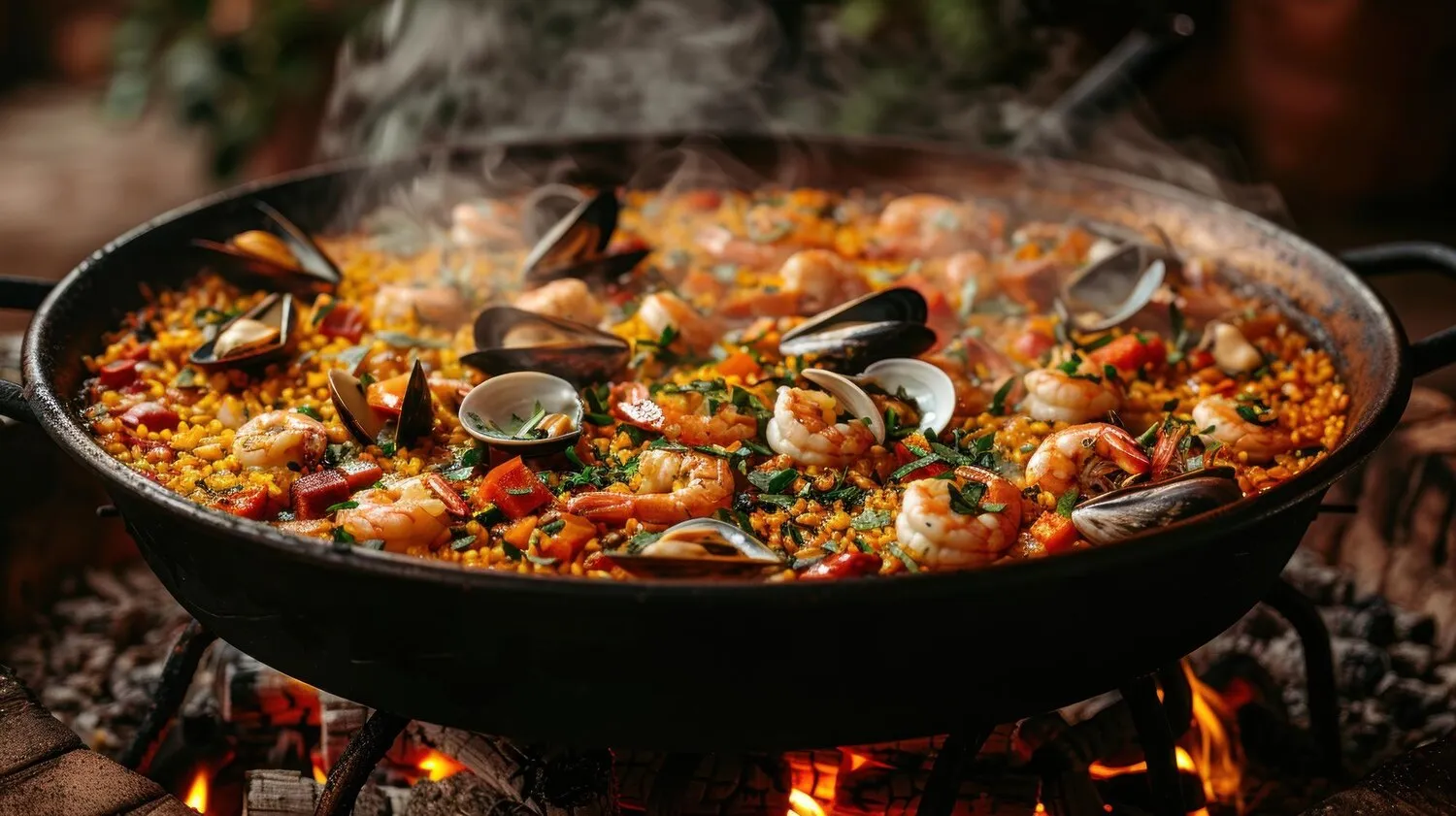
Arroz
Rice dishes (paella or similar). Several reviews mention enjoying rice dishes, suggesting they are a feature of the menu.
Nutrition Facts
* The % Daily Value (DV) tells you how much a nutrient in a serving of food contributes to a daily diet. 2,000 calories a day is used for general nutrition advice.
Catedral Bar Restaurante
Rice cultivation dates back thousands of years, originating in Asia and spreading globally through trade and migration. Different cultures have adapted rice to their local ingredients and culinary traditions, resulting in countless unique rice-based dishes.
Rice holds immense cultural significance in many societies, representing sustenance, prosperity, and community. Its presence extends beyond the dining table into traditions, rituals, and celebrations.
Symbol of Life
In many Asian cultures, rice is considered sacred, symbolizing life and fertility. It's often offered in religious ceremonies and is deeply intertwined with daily life.
Social Gathering
Rice-based meals are often central to family and community gatherings, fostering togetherness and shared experiences. Large paella pans, for example, are often used in Spain for celebrations.
Economic Importance
In many countries, rice production is a major economic activity, employing millions and shaping agricultural practices and trade relationships.
Tradition and Inheritance
Many rice dishes are passed down through generations, carrying with them family history and culinary traditions.
The flavor profile of 'Arroz' or Rice is incredibly diverse depending on preparation, ranging from simple, clean tastes to rich, complex combinations of herbs, spices, and proteins.
The flavor foundation is the rice itself, which can be short-grain (sticky), medium-grain, or long-grain, each offering a distinct texture and subtle flavor. Additional flavors depend heavily on the ingredients used. Broths (chicken, vegetable, seafood) impart savory notes. Spices such as saffron, turmeric, cumin, or paprika introduce warmth and complexity. Herbs like cilantro, parsley, or thyme add freshness. Proteins (chicken, seafood, pork, beans) contribute depth and richness. Common flavor profiles include savory, aromatic, subtly sweet (from some rice varieties), and occasionally spicy.
Rice to Water Ratio
Use the correct rice-to-water ratio for the specific rice variety. A common starting point is 2:1 water-to-rice for long-grain rice, but always check specific guidelines for optimal results.
Rinse Rice Before Cooking
Rinsing the rice before cooking removes excess starch, leading to a fluffier texture and preventing stickiness, except for rice varieties that are meant to be sticky (such as sushi rice).
Low and Slow Cooking
Cook rice over low heat to prevent burning and ensure even cooking. Cover the pot tightly to trap steam and maintain consistent temperature.
Resting Time is Crucial
After cooking, let the rice rest, covered, for 10-15 minutes. This allows the steam to redistribute, resulting in a more even texture and preventing the rice from becoming mushy.
Fluffing Matters
Gently fluff the rice with a fork after resting to separate the grains and prevent clumping.
Explore additional Rice dishes dishes and restaurants
Explore Rice dishesDiscover top dining spots and culinary experiences in Almería.
Explore AlmeríaLearn more about the food culture, restaurant scene, and culinary heritage of Spain.
Explore Spain